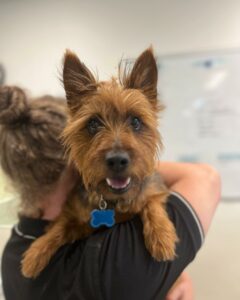November marks a crucial period on our calendars, serving as Dog Cancer Awareness Month. It’s a time dedicated to raising awareness about canine cancer, educating dog owners about its commonness, symptoms, and treatment, and emphasising the importance of regular health checks. One of the primary focuses is understanding the significance of checking our furry friends for any unusual lumps and bumps.

All too Common
Cancer remains one of the leading causes of death in older dogs, yet many pet owners are unaware of its commonality. Just like humans, dogs can develop a variety of cancers, such as lymphoma, melanoma, and osteosarcoma. Awareness is the first step towards early detection, and potentially extending the quality and duration of your pet’s life.
The Silent Threat
One of the most insidious aspects of cancer is its ability to advance without obvious symptoms until it’s in the later stages. Lumps, swelling, sores that don’t heal, or an abnormal odour can often go unnoticed. That’s why active, regular checks by pet owners are vital. By simply stroking your dog, you may feel a new lump or bump that wasn’t there before.
Early Detection is Key
While not all lumps and bumps are malignant, finding any growths early can be a life-saving discovery. Early detection provides the broadest array of treatment options and the best chance of success. Treatments may include surgery, chemotherapy, radiation, or immunotherapy, and early-stage intervention often results in better outcomes.
 Routine Checks at Home
Routine Checks at Home
Routine home examinations can make a world of difference. Make it a habit to check your dog for lumps, bumps, or swellings, especially if they are middle-aged or older. This check can be a gentle, calming process, integrated into your regular bonding activities like grooming or cuddling.
Here’s a brief guide on conducting a home check:
- Visual Examination: Start with a visual inspection of your dog’s body, looking for any noticeable changes in symmetry or unusual swellings.
- Manual Check: Gently run your hands over your dog’s body, paying extra attention to the abdomen, legs, and under the neck. Feel for any lumps or bumps under the skin.
- Monitor Changes: Be aware of non-tumour signs, including changes in appetite, unusual weight loss or gain, or differences in behaviour or energy levels.
- Keep Records: If you find any irregularities, note their size, texture, and location. Track any changes over time.
- Professional Veterinary Assessments
Should you find any abnormalities during your checks, it’s paramount to consult with your veterinarian. They can perform more comprehensive tests, such as biopsies, x-rays, or blood tests, to diagnose the issue accurately. Your vet can also guide you through possible next steps and treatment options if needed.
Dog Cancer Awareness Month is a great reminder and opportunity to begin building a routine of checking your pup from now and into the future. Although we’d all love it, our pups aren’t able to speak to us to let us know when something is wrong, so it’s our responsibility as pet owners to keep an eye out for them!